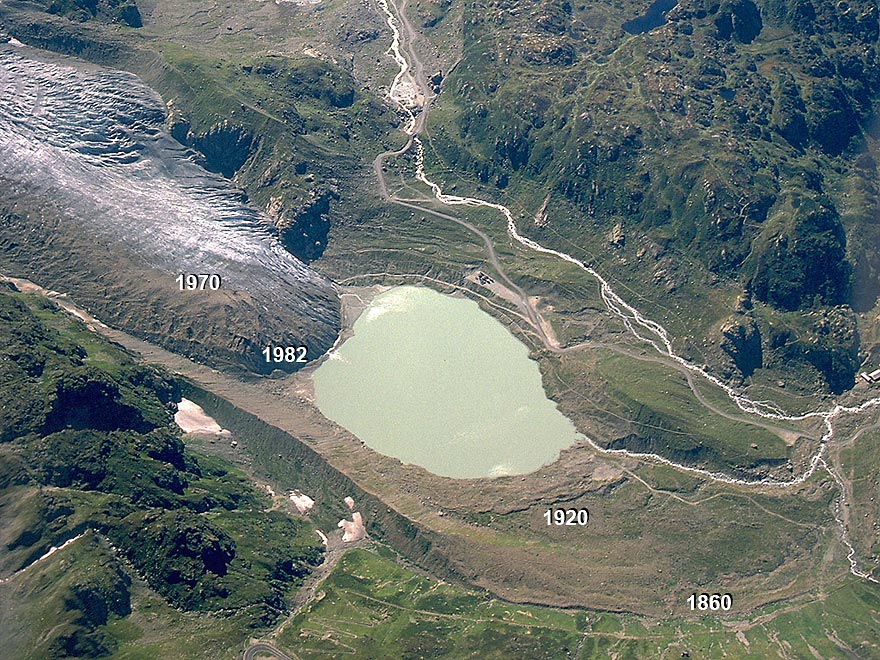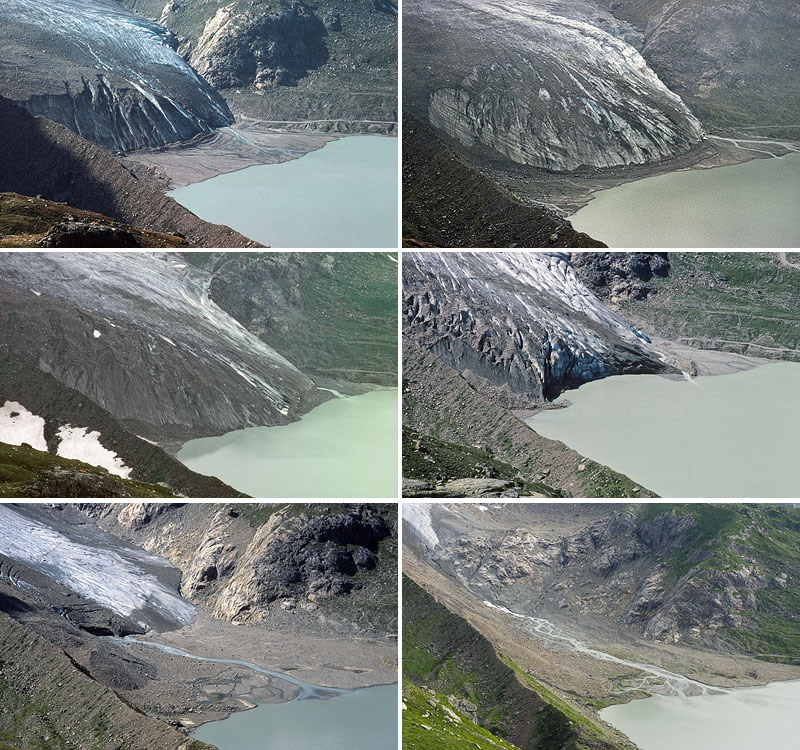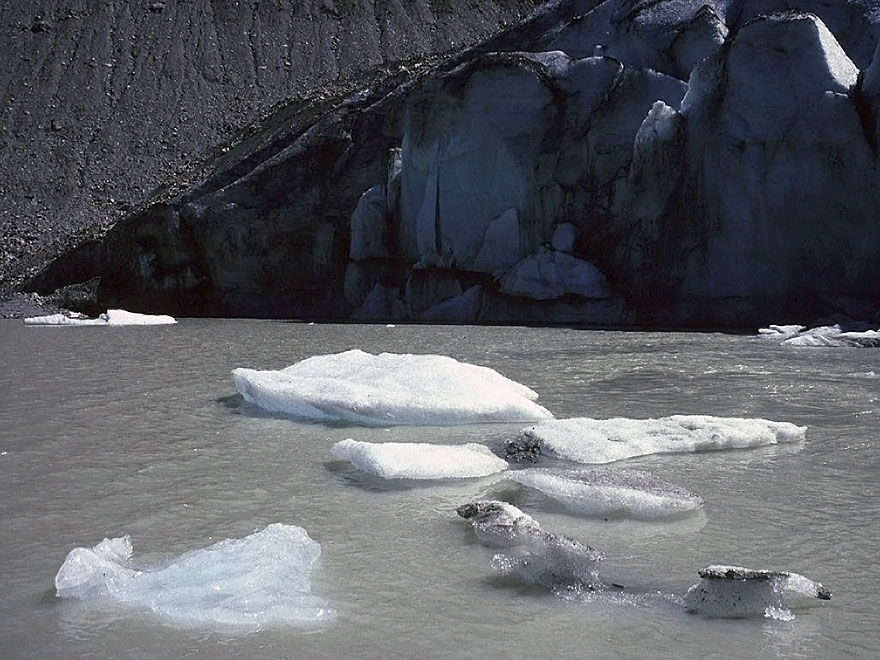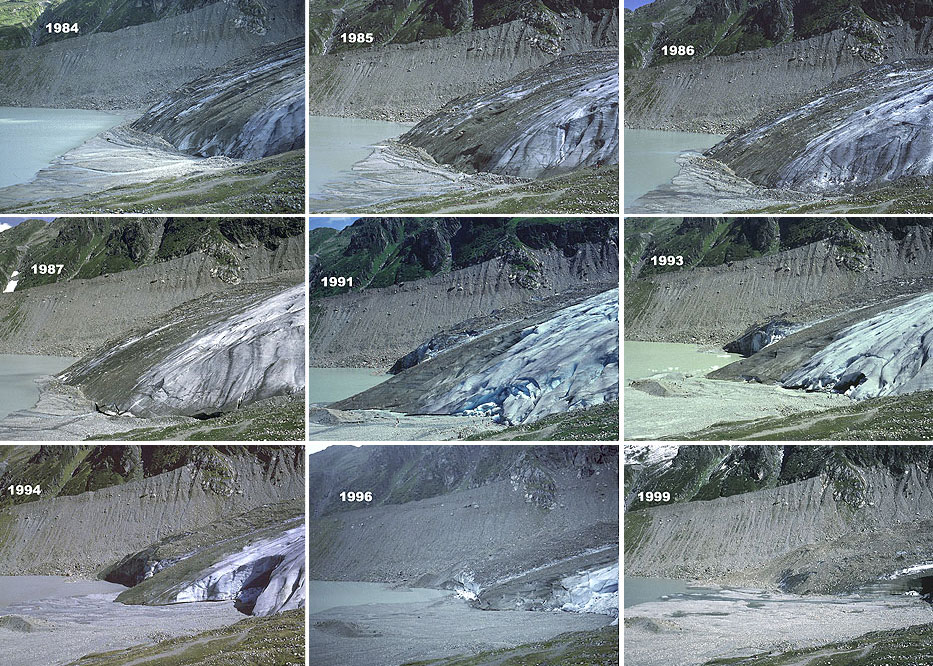Fluctuations of the tongueBecause of its moderate length, compared with other glaciers of the Alps, Steigletscher shows especially interesting reaction of its snout to climatic change. The glacier is large enough to smooth out annual temperature fluctuations but, at the same time, small enough to react to temperature fluctuations on time scales of decades. The advances from 1911 to 1923 and from 1970 to 1989 were the result of slight cooling. However, both periods of advance were only minor episodes during a general and much more pronounced recession since the end of the Little Ice Age. |
 Aerial photo 1982: the huge terminal moraine of 1860 (end of Little Ice Age) is very prominent. An ancient route towards Sustenpass follows the moraine (bottom). Until 1912 recession took place but was followed by a re-advance, culminating in the formation of the moraine of 1920. During the next recession Steisee (centre) was formed. This recessional phase ended around 1970 (approx. snout position indicated), after which the tongue advanced again towards Steisee. Then recession set in again, and in 2006 the position of 1970 was reached once more. |  Repeat photos from the road to Sustenpass towards the terminus, from the NE: 1981, 1983, 1987, 1991, 2003 und 2010 (from top left to bottom right). During the advance the convex tongue made a small but still rather prominent push moraine. From about 1988 to 1994 the central part of the glacier terminus was in contact with Steisee. During this time the push moraine was almost totally destroyed. Then strong recession set in. Note smaller scale of last photo. |  Looking from the West towards the terminus in 1992. In the background the still fairly steep long profile of the snout can be seen. Contact with the lake water increased ablation. This led to the formation of a calving front. Small icebergs that melted rapidly calved from the terminus. However they were never very big and, therefore, did not last long before melting away. |  Repeat photos from the left side of the valley. From 1984 until 1987 the advancing tongue was convex like a big paw. During the following phase of recession, i.e. after 1991, it becomes flatter. In 2006 no more active ice was visible from the position from where these photos were taken. Only some stagnant ice remained on the far side of the valley where it was protected from solar radiation by a massive debris cover. |